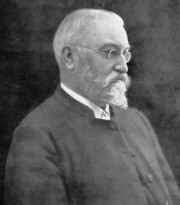

Exhibit 2
The Evidence of a Numerical Significance

The mystery of the seven stars which thou sawest in my right hand,
and the seven golden candlesticks. The seven stars are the angels of the seven
churches: and the seven candlesticks which thou sawest are the seven churches.
Revelation 1:20
One question that emerges in the debate over church eras is why there are only seven letters written to God’s people in Asia when there were more than seven actual congregations in that region. History and the scriptures identify at least four other churches of God, including Colosse, in that area. Furthermore, why are there so many sets of seven in Revelation? In addition to seven churches, this remarkable book identifies seven seals, seven trumpets, seven vials, seven thunders, seven gentile kingdoms, and seven resurrections of the Holy Roman Empire.
The Power of Seven
The fact that there are seven letters is not simply the result of chance. In truth, this number reflects a pattern that is woven throughout the scriptures and appears prolifically in the book of Revelation. But what is the significance of this number and why would God chose to employ it? In his book, Numbers In Scripture, the prominent Bible scholar, E.W. Bullinger discussed this question.
In Hebrew, seven is (shevah). It is from the root (savah) to be full or satisfied, have enough of. Hence the meaning of the word "seven" is dominated by this root, for on the seventh day God rested from the work of creation. It was full and complete, and good and perfect. Nothing could be added to it or taken from it without marring it. It is seven, therefore, that stamps with perfection and completeness that in connection with which it is used.
Throughout the scriptures, seven is the number God uses to symbolize completion. There are seven days in the week and seven annual holy days. Additionally, as was just mentioned, the book of Revelation describes seven distinct groups. Furthermore, each of these groups is comprised of seven parts. This simply cannot be the result of chance. The use of the number seven cries out that something more is taking place in this prophecy. Therefore the fact that there are exactly seven churches being addressed should come as no surprise.
The use of seven when numbering these congregations strongly suggest that they are the complete New Testament Church down through time. Notice how Christ uses this number when describing them.
I turned to see the voice that spake with me. And being turned, I saw seven golden candlesticks; and in the midst of the seven candlesticks [one] like unto the Son of Man, clothed with a garment down to the foot, and girt about the paps with a golden girdle. His head and [his] hairs [were] white like wool, as white as snow; and his eyes [were] as a flame of fire; and his feet like unto fine brass, as if they burned in a furnace; and his voice as the sound of many waters. And he had in his right hand seven stars: and out of his mouth went a sharp two edged sword: and his countenance [was] as the sun shineth in his strength. And when I saw him, I fell at his feet as dead. And he laid his right hand upon me, saying unto me, fear not; I am the first and the last: I [am] he that liveth, and was dead; and, behold, I am alive for evermore, amen; and have the keys of hell and of death. Write the things which thou hast seen, and the things which are, and the things which shall be hereafter; the mystery of the seven stars which thou saw in my right hand, and the seven golden candlesticks. The seven stars are the angels of the seven churches: and the seven candlesticks which thou saw are the seven churches (Revelation 1:12-20).
Here, the Messiah states that there are seven candlesticks and that they are “the seven churches.” Notices what He does not say. At no time does Christ say they are seven “OF” the churches, but rather THE seven churches. Since seven is the number of completion, these specific churches must be understood as complete—part of a whole. As such, these letters are addressed to the entire Church of God. It is also important to note that the candlesticks are in Christ’s right hand and that He is in their midst. This means that they are under His authority. He is the head of His church—the entire church.
Who are the Seven Angels?
|
